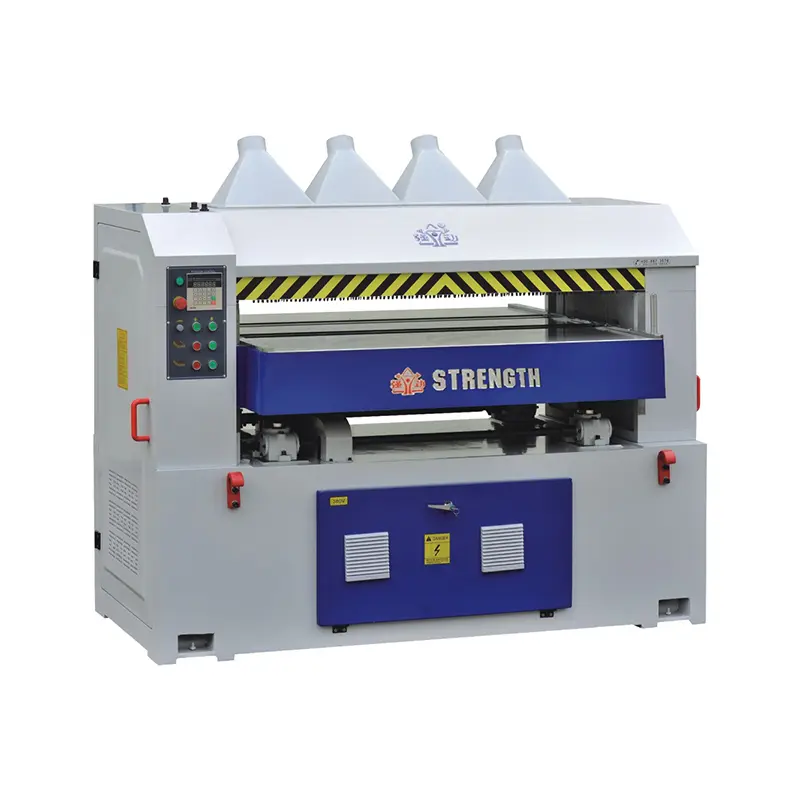Demand for Small Industrial Planers in the Toy Manufacturing Industry
I. Market Trends: Toy Manufacturing Drives Explosive Demand for Small Industrial Planers
Structural changes and production model upgrades in the toy industry have directly driven the growth in demand for small industrial planers, becoming a core driver of equipment procurement.
The strong resurgence of wooden toys is boosting demand for basic processing. With consumers increasingly favoring environmentally friendly and natural materials, wooden toys now account for 23% of the global toy market. Core processes in their production, such as wood surface planing and smoothing, rely heavily on small woodworking planers (up to 85%). These toys are often produced in small batches with multiple styles, highlighting the high energy consumption and cost disadvantages of large planers, while the flexibility of small equipment becomes essential.
The increasing sophistication of toys is forcing improvements in equipment precision. Modern toys require dimensional tolerances as low as ±0.5mm and surface finishes of Ra≤1.6μm, standards that are difficult to meet with traditional manual processing or ordinary equipment. Small industrial planers, with their precise planing control, have become key equipment for solving surface burrs and dimensional deviations in toys, reducing product defect rates by over 40%.
International compliance requirements drive equipment upgrades. International toy safety standards such as EU EN71 and US CPSIA have strict regulations on the roundness of product edges and the release of harmful substances. High-quality small industrial planers, through integrated dust removal design and food-grade processing materials, can effectively avoid dust pollution and heavy metal residues, helping companies successfully pass international certifications.
II. Core Application Scenarios: Precise Adaptation of Small Industrial Planers in Toy Manufacturing
Small industrial planers are not general-purpose equipment; their needs are highly matched to specific processes in toy manufacturing, mainly concentrated in three scenarios:
1. Basic Shaping Processing of Wooden Toys Wooden building blocks, puzzles, toy car shells, and other products require two core processes: rough planing and fine planing. 1. **Small woodworking planers:** Suitable for processing wood with varying moisture contents (6%-12%), small planers allow for thickness control down to 0.1mm by adjusting the planer blade height. This removes saw marks and burrs from the wood surface while ensuring smooth joints, laying the foundation for subsequent sanding and painting processes.
2. **Flat surface processing of toy metal parts:** Metal frames in electronic toys and transmission parts in mechanical toys are often made of cast iron and aluminum alloy. Small planers are highly adaptable to planing brittle materials, efficiently completing rough surface machining of parts with minimal chipping and achieving the required surface roughness. Subsequent precision milling can then meet the assembly requirements of toy metal parts, saving workshop space compared to larger equipment.
3. **Customized processing of irregularly shaped toy parts:** Irregularly shaped structural parts in smart toys and educational toys are often produced in small batches. Small industrial planers are lightweight, portable, and easily adjustable, supporting rapid changeovers (60% faster than larger equipment). They can adapt to the planing needs of parts of different sizes and shapes, perfectly solving the production challenges caused by the fragmented nature of orders in the toy manufacturing industry.
III. Rigid Requirements: Core Requirements of Small Industrial Planers in the Toy Manufacturing Industry
The international toy procurement market has stringent selection standards for equipment. Small industrial planers must meet four core requirements to gain favor with buyers:
**Accuracy Control:** They must meet the stringent requirements of toy dimensional tolerances of ±0.5mm and surface finish Ra≤1.6μm. Stable speed must be maintained during planing to avoid uneven planing depths, surface scratches, and other issues, ensuring product consistency.
**Safety and Compliance:** The equipment must be equipped with anti-pinch protection devices and a dust collection system to reduce safety hazards and environmental pollution during processing. Materials used in contact with toys, such as cutting tools and worktables, must pass heavy metal migration testing and comply with standards such as EN71-3 and CPSIA.
**Efficient Adaptability to Small Batch Production:** Given the toy industry’s “multi-variety, small-batch” production characteristics, equipment must be able to quickly adjust parameters and easily change cutting tools, with a single-batch processing efficiency of no less than 50 pieces/hour, while energy consumption is controlled below 5.5kW to reduce enterprise operating costs.
Durability and ease of maintenance. International buyers focus on the total life-cycle cost of equipment. Small industrial planers need to use high-hardness cutting tools, a stable transmission system, and an average mean time between failures (MTBF) of no less than 8000 hours; at the same time, the structural design should be simple to facilitate daily maintenance and parts replacement for overseas customers.
IV. Procurement Selection Guidelines
As a bridge connecting equipment manufacturers and toy companies, international buyers should focus on three core aspects when selecting equipment: “suitability, compliance, and cost-effectiveness,” avoiding blind procurement:
Target equipment type according to toy type. Wooden toy companies should prioritize small woodworking planers with adjustable height to ensure suitability for wood processing; metal parts manufacturers should focus on shaper planers, which also have advantages in processing brittle materials.
Verify core parameters and certifications. The key considerations are: First, confirm the equipment’s dimensional accuracy and surface finish control capabilities, requiring manufacturers to provide test reports conforming to standards such as EN and CPSIA. Second, pay attention to parameters such as equipment power and worktable size to ensure suitability for the toy factory’s workshop space and production capacity requirements.
Through cost and service assessment, compare equipment purchase prices, energy costs, and maintenance expenses, prioritizing high-performance products with low purchase costs and low operating costs. Also, confirm whether the manufacturer provides English technical documentation and overseas after-sales support to reduce subsequent sales and service risks.
Focus on the potential for intelligent upgrades. Small industrial planers with IoT capabilities and remote maintenance can command a market premium of up to 40%. Purchasing such products can enhance competitiveness in the international market and meet the future intelligent production needs of toy companies.
Post time: Nov-12-2025

